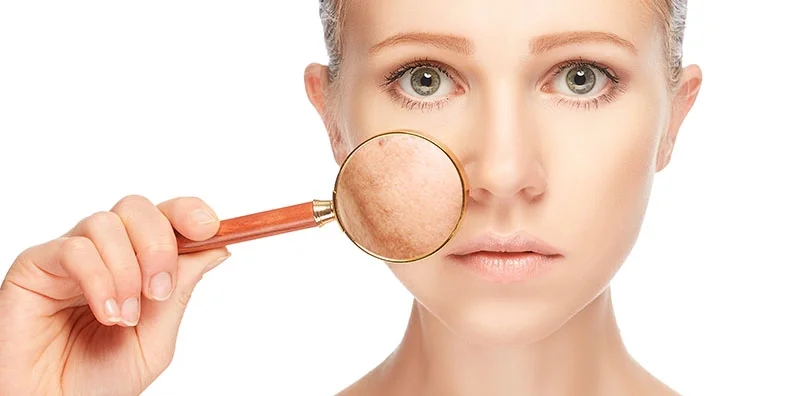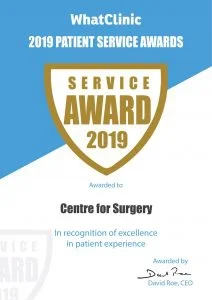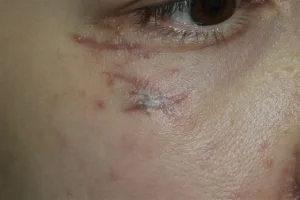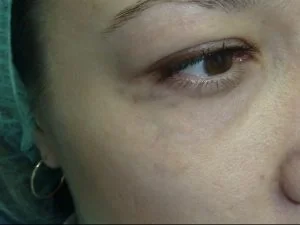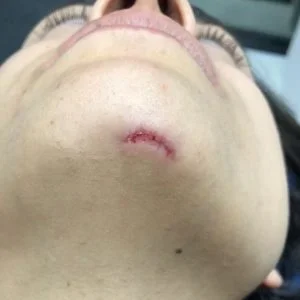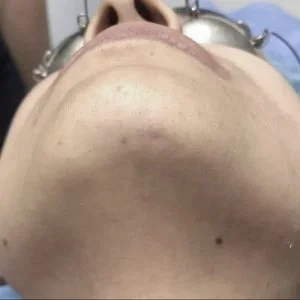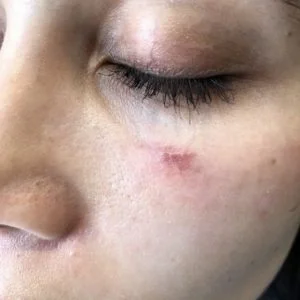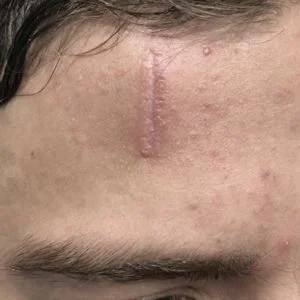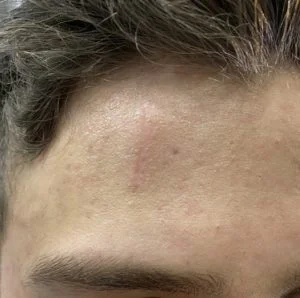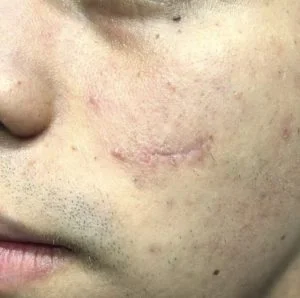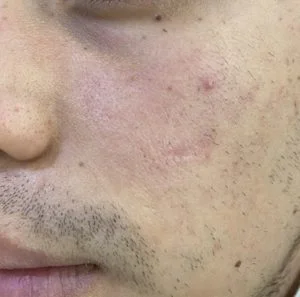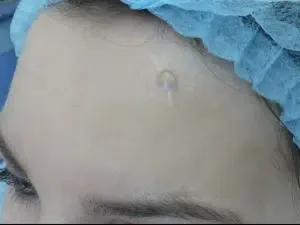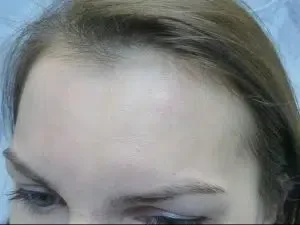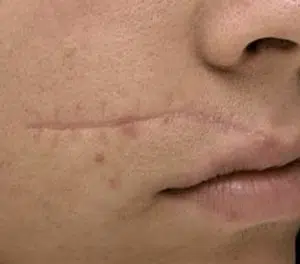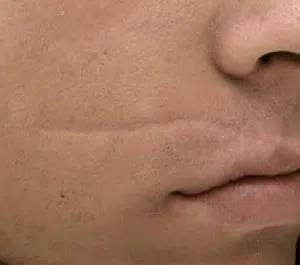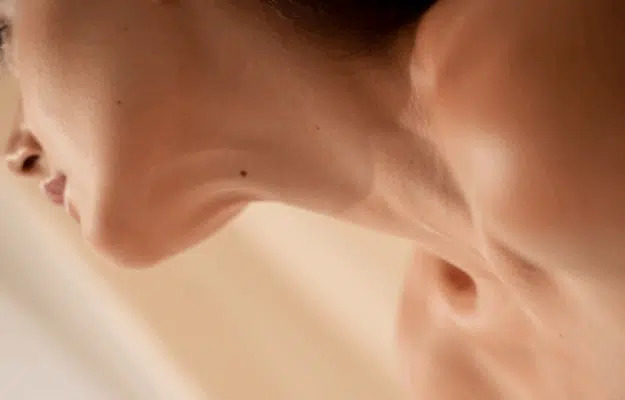Facial scar revision in London
Facial scar revision is a commonly performed treatment to help improve the appearance of an existing scar. When the skin is injured, multiple layers will be affected, and during the healing process, a scar will form. The appearance of this scar will vary depending on how it was acquired – traumatic injury, burn, emergency surgery or infection are some of the more common causes. A scar on the face can often be very unappealing aesthetically and can cause confidence issues.
10 REASONS TO CHOOSE US – CLICK HERE TO LEARN MORE
Types of facial scars
Facial scar revision is designed to improve the appearance of an existing scar which is on the face. It is important to note that this procedure will not completely remove the scar. Instead, you will have a new scar in place of the old one. This is particularly appealing to those who have large, prominent scars on their face.
Different types of scars which can be treated with facial scar revision include:
Facial acne scars: these are a very common cause of atrophic facial scars and Centre for Surgery are a specialist centre for treatment of all types of facial acne scars.
Post-traumatic scars: this is acquired from a traumatic event such as an illness, accident or emergency surgery.
Hypertrophic scars: unlike a keloid scar, a hypertrophic scar will not extend over the size of the original wound. However, it will be raised and may look unsightly.
Keloid scars: these scars may look normal to begin with, but the scar will then start to overgrow the original scar and will appear more raised.
Burn scars: when the skin has been burnt, it will then appeared scarred and puckered. Facial scar revision will be able to remove the burnt section of skin.
Ideal candidates for facial scar revision
You will be a suitable candidate for this procedure if you have a scar on your face which you are wishing to remove.
It is important to have realistic expectations about what the procedure can achieve. Facial scar revision will not be able to completely remove the scar – instead, it will leave you with a new, more aesthetically pleasing scar. There are many factors which will influence the appearance of the scar, such as your skin colour, type, age and the type of scar.
Your health will also indicate whether or not you are a good candidate. You will need to be a non-smoker, or stop smoking at least four weeks prior to surgery, and continue to stop smoking four weeks afterwards. Smoking can have a negative impact on wound healing, so it is best to abstain from smoking to avoid complications with the new scar.
The surgeon will also assess how long you have had the scar for. Scars which are immature can often result in hypertrophy after scar revision. Therefore, your surgeon may recommend you wait until your original scar is fully mature before undergoing any revision surgery.
Facial scar revision techniques
There are numerous surgical and non-surgical options for facial surgery. The right procedure will vary on the type of scar you have, its location, and your end outcome. If you have already tried other treatments which have been unsuccessful, this will also be taken into account.
Surgical options include:
- Incision: the scar is completely excised
- Skin graft: skin is taken from another section of the body
- Z-Plasty: this method moves the scar to another, more discreet, location of the bottom
Non-surgical options include:
- Laser resurfacing
- Dermabrasion
- Steroid injections
- Morpheus8
Often non-surgical options are tried first, and surgical options may be discussed if the results were unsatisfactory.
Recovery after facial scar revision
The recovery period will vary depending on which procedure was undertaken to repair the scar.
Non-surgical options will have little to no recovery period, and you will be able to return to your usual day-to-day life directly after the procedure. You may notice some redness or swelling around the treatment site. It is also recommended that you keep the scar out of direct sunlight, or use SPF 50+ sunscreen.
Surgical options will involve a longer recovery period, although you will be able to return home the same day, once the effects of the anaesthetic have worn off. You may feel some discomfort around the incision site. If dissolvable stitches were not used, you will have to visit the clinic again to have the stitches removed. You will have to avoid any strenuous physical exercise in order to avoid damaging the new scar. It is also recommended that you sleep with your head raised to reduce swelling, and avoid sleeping on your front or sides.
Make sure to avoid smoking throughout the recovery period in order to avoid any delays or complications with wound healing.
Facial scar revision before and after
Case 1:
Case 2:
Case 3:
Case 4:
Case 5:
Case 6:
Case 7:
Case 8:
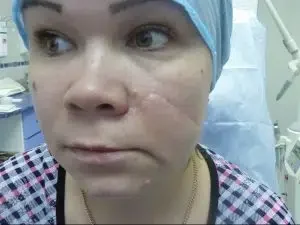
FAQs
-
Can I have facial scar revision?You will be an eligible candidate for facial scar revision if you:
Have a scar you are wishing to have repaired
Are 18 years or older
Are in good health
Are a non-smoker or are able to stop smoking prior to and after the procedure
Have reasonable expectations about what the procedure can achieve. -
What type of anaesthetic will I be given?Facial scar revision can be done under a local anaesthetic, so you will be awake during the procedure, but unable to feel any discomfort or pain.
-
How is facial scar revision performed?There are numerous treatment options. The right one for you will depend on your scar, what treatment options have been done before and what your end outcome is.
Surgical options include incision, skin graft or z-plasty. Non-surgical options include laser, dermabrasion, and steroid injections. -
How long will the procedure take?Surgery time will vary depending on the method used, as well as the size and location of the scar.
Surgery will generally take between one to two hours to complete. -
What is the recovery period like after facial scar revision?This will vary depending on whether you undertook surgical or non-surgical scar revision. Non-surgical scar revision will have minimal recovery time.
Surgical scar revision will have a longer recovery time. You will need to avoid vigorous exercise in order to avoid damaging the scar. It is also recommended that you sleep with your head propped up with several pillows to reduce swelling.
You will have to avoid smoking during the recovery period to avoid any complications with the wound healing. You should also avoid excess sun exposure, and use SPF 50+ sunscreen.

